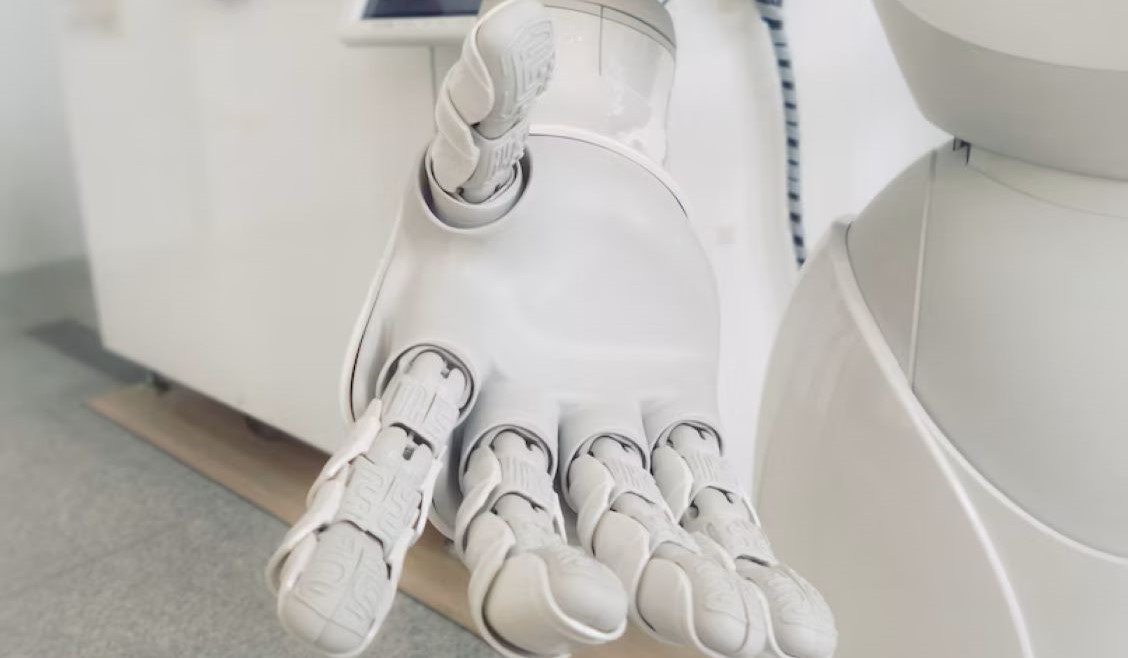
Art and Technology in the Age of AI
The impact of new technologies has been thought about in popular culture for years. From Shelley’s Frankenstein to Asimov’s I Robot, to all the outlandish tech you’ll see in Star Wars or Black Mirror, it’s clear that ideas related to technological advances have influenced the arts. And it’s likely that machines will continue to take ahold of our imaginations. So, let’s have a look at some of the ways art and technology intersect today.
Robot musicians
Robot musicians might seem like a thing of the future. Yet, the history of robots in art can be traced back decades. One example is the work of Nicolas Baginsky.
In 1992, Baginsky used artificial neural networks, specifically unsupervised neural networks, to create his first robot musician, a guitar named Aglaopheme. This autonomous, self-learning guitar was then joined by a robot bass named Peisinoe and a robot drum named Thelxiepeia. Collectively, they’re known as the ‘The Three Sirens’.
The authors of ‘The Strangest Music in the World: Self-Supervised Creativity and Nostalgia for the Future in Robotic Rock Band “The Three Sirens”’ discuss Baginsky’s mission to create robot musicians rather than robots that play instruments. Baginsky’s aim was to create something generative and experimental.
The authors note that:
“Baginsky’s project is important because it contrasts the use of AI in music for utilitarian purposes with a more open-ended and experimental approach.”
Their article helps to recontextualize the way we might see human–machine interactions in art. Given the capabilities of such technologies, we can hope to push the boundaries of art and technology further.
Robot Painters
Can robots paint? There’s research out there that shows they can be programmed to. The study “Region-based approaches in robotic painting” looks at how paintings can be replicated using robots. However, there are some hiccups with the technology used to replicate paintings, as demonstrated by e-David in this 2022 study.
Here, the way that art and technology, specifically algorithms, interact is analyzed. Using e-David, a painting robot developed at University of Konstanz, the authors look at the use of stroke-based rendering (SBR) in replicating art. The study takes the works of Kandinsky, Mondrian, Delaunay, and van Gogh as input images. The aim of stroke-based rendering is to mimic human painting. To be able to mimic brushstrokes accurately, the authors note that an understanding of things like ‘brush pressure, angle, and velocity’ is important when building relevant algorithms.
However, the authors highlight that robots sometimes struggle with stroke-based rendering. If the machine used to replicate brush strokes runs into an error, it is unable to correct in the same way that humans can. The authors implement ‘structured regions’ in robot-based painting to minimize errors. By doing so, they help to break up images into components that can be painted individually to recreate the entire piece.
Looking at the technicalities of painting with robots can help to create new tools for artists. This makes it an interesting area to keep an eye on in terms of art and technology.
AI as artist
There’s been plenty of speculation, and worry, regarding the potential of machine artists. Graeme Revell’s article ‘Madeleine: Poetry and Art of an Artificial Intelligence’ challenges ideas about machine art in the context of human-machine interactions. In the article, Revell experiments with a poetry- and art-generating AI. In this large-scale project, Revell uses GPT-2, an open-source AI tool that generates text in response to prompts, and DALL-E 2, which outputs images based on text prompts, to create digital art.
The project is immense in scale. It focuses on the creation of a “tripartite ‘cyborg’” using artificial intelligence, referred to as ‘Madeleine’. It aggregates data from millions of webpages, and details interactions with ‘Madeleine’. The labor-saving abilities of AI become apparent in this article. Where it could take years to scour something like 8 million webpages, the use of AI can make the research process for artists and researchers much shorter.
Revell argues that questions about the distinction between humans and machines in art-creating processes are misdirected.
In fact, Revell contends that
“We are no longer within the realm of science fiction; it is no more a question of either cooperation or antagonism between man and machine as separate entities”.
The future of art and technology
The introduction of different technologies in art has led to a reconceptualization of how we see the arts and sciences, as we’ve explored here. The research suggests that there will be more interest in AI-generated and robot-generated art in the coming years.
The research included in this post is available in the Topical Collection ‘Review of Machine Art’. To read more about the research perspectives and innovations in this area, have a look at more of the research published in MDPI journals.










